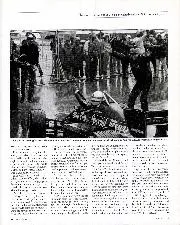“He said ‘you want a Bell helmet? Help me take care of mine!’ So I cleaned Senna’s helmet that weekend and took care of it for him, and two years later I finally bought one.”
Nigel Roebuck recounted Senna’s first win back in 2014, saying that only 10,000 people witnessed Senna win for the first time because grandstand tickets were notoriously expensive for the locals.
The Brazilian finished more than a minute ahead of Michele Alboreto in the pouring rain, with pole position allowing him to avoid the spray, though the puddles were more than a nuisance for all.
“It started raining like hell,” recounts Bernardo. “And people still stayed to watch. They were so passionate, waiting for the end of the race. It was very emotional, I remember, people said that he never looked so happy.
“And I still never saw him, or anyone, so happy to win a race as he was in 1985 at Estoril.”
Senna had made his name at Estoril in the world karting championships, finishing as a runner-up in 1979. Bernardo recalls that just as many fans witnessed his first F1 win as they did his karting debut at Estoril.




